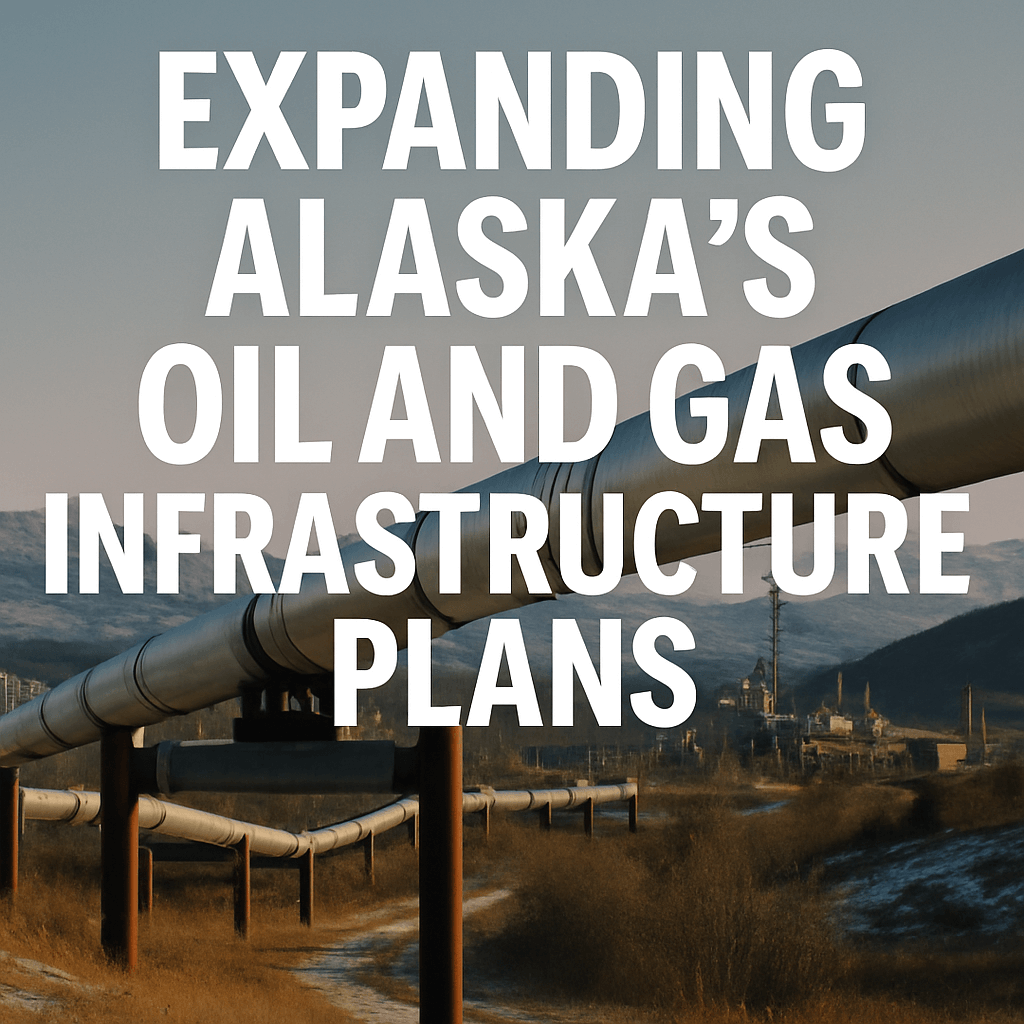Expanding Alaska’s Oil and Gas Infrastructure Plans

President Donald Trump is advocating for a significant increase in oil production through Alaska’s extensive pipeline network and has announced plans to develop a large-scale natural gas project, which he described as the ‘big, beautiful twin’ to the existing oil operations. This announcement was made during a recent visit to Prudhoe Bay, a site known for its prolific oil fields, and was articulated by U.S. Energy Secretary Chris Wright.
Context of the Announcement
The remarks from Secretary Wright came as a part of a multi-day tour involving other key administration officials, including Interior Secretary Doug Burgum and Environmental Protection Agency Administrator Lee Zeldin. This tour aims to draw attention to the administration’s strategy of expanding oil and gas drilling, mining, and logging initiatives in Alaska. Such efforts have faced significant pushback from environmentalists, who argue that such expansions would threaten wildlife and natural habitats.
Reversal of Biden-Era Restrictions
During the visit, Secretary Burgum announced plans to reverse the leasing restrictions implemented under the Biden administration, particularly in sections of the National Petroleum Reserve-Alaska (NPR-A) that have been designated for wildlife conservation and subsistence uses. The NPR-A, located to the west of Prudhoe Bay, is a vital area that holds extensive untapped oil reserves.
- Background: The trans-Alaska pipeline system, which spans 800 miles (approximately 1,300 kilometers), has been a cornerstone of Alaska’s economy since its inception nearly 50 years ago.
- Current Oil Flow: Oil throughput has seen a dramatic decline, from a peak of about 2 million barrels per day in the late 1980s to an average of just 465,000 barrels per day last year.
- Goals: Wright’s assertion to double oil production as well as develop a large natural gas pipeline reflects a renewed commitment to significantly ramp up energy output from the region.
International Stakeholder Engagement
As part of their visit, U.S. officials engaged with representatives from several Asian countries, notably Japan, South Korea, Taiwan, and the Philippines. The focus on the natural gas project is particularly pertinent, as its current proposal aims to supply local Alaskan residents while also exporting liquefied natural gas (LNG) to international markets.
Matsuo Takehiko, Vice Minister for International Affairs at Japan’s Ministry of Economy, Trade and Industry, was present at the meeting, highlighting Japan’s significant interest in diversifying its energy sources through U.S. gas exports.
Economic Feasibility and Historical Context
Despite an ongoing interest from state leaders in Alaska, projects of this magnitude have historically faced hurdles concerning economic feasibility, shifts in policy direction, and regional competition. Tariff negotiations between the U.S. and Asian nations are viewed as potential catalysts for securing investments necessary for this gas project.
Local Political Landscape
In Alaska, many political leaders, including U.S. Senator Dan Sullivan and Governor Mike Dunleavy, align themselves with the Trump administration’s push for increased drilling. Their support is echoed by numerous Alaska Native leaders who have expressed a desire for more local control over natural resource management. This starkly contrasts with the policies enacted during the Biden administration, which many locals feel overlooked their energy needs.
During a recent meeting in Anchorage, Senator Lisa Murkowski stated that Alaska’s leaders are eager to collaborate with federal officials and be recognized as essential players in the discussion surrounding resource development.
Environmental Concerns
However, the announcement has drawn sharp criticism from environmental advocacy groups. They argue that the rollback of protections in the NPR-A poses risks to sensitive ecosystems and wildlife habitats. Erik Grafe, an attorney with Earthjustice, described the administration’s focus on fossil fuels as troubling, notably given Alaska’s vulnerability to climate change impacts.
The Department of the Interior has indicated its plans to collect public comments on the proposed regulatory changes, suggesting an ongoing process to address differing viewpoints.
Future Outlook
The three officials concluded their tour with appearances at Governor Dunleavy’s annual energy conference, indicating a clear focus on galvanizing support for their initiatives moving forward. As global energy demand continues to rise, the push for expanded oil and gas production in Alaska will undoubtedly remain a contentious issue, balancing economic interests with environmental stewardship.
“You have the big two right here. Let’s double oil production, build the big, beautiful twin, and we will help energize the world and strengthen our country and families.” – Chris Wright, U.S. Energy Secretary
Source: fortune